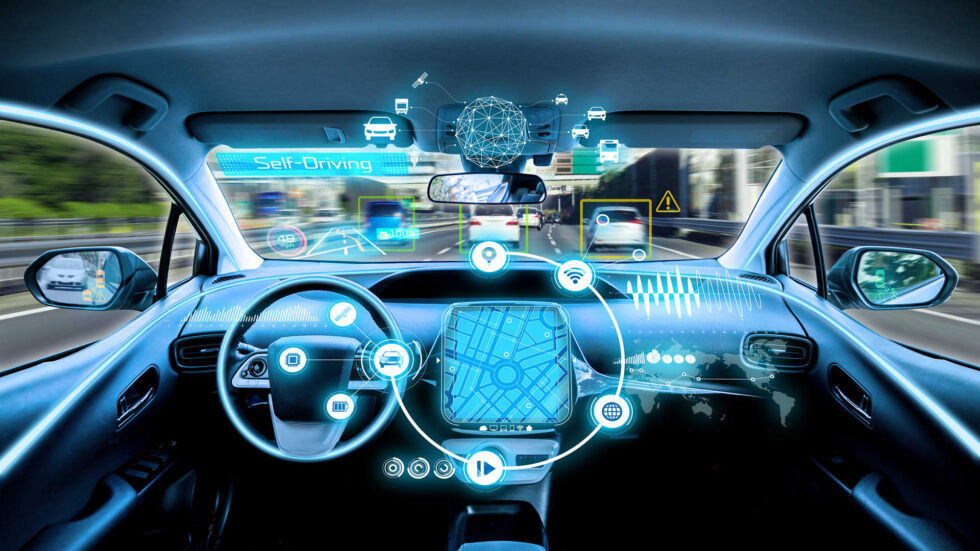
It was fun for a while, a novelty even, but I, like so many others, am becoming increasingly frustrated by the sheer volume of technology bundled into today’s new cars.
And my frustration isn’t aimed purely at safety technologies or at increasingly complex infotainment systems. It’s aimed at everything, including the added cost to new cars.
What’s a few microchips between friends, I hear you ask?
Close to half of a new car’s price, and rising, is the answer.
A 2020 Deloitte study revealed that in 2017, around 40 per cent of a new car’s cost is made up of electronics systems powered by semiconductors. Forty per cent! That’s up from 18 per cent in 2000, and 20 per cent in 2007. Worse still, Deloitte’s white paper projected that it will reach 45 per cent by 2030.
And you wonder where all the affordable cars have gone?

But in what is becoming a semiconductor arms race, carmakers are adding ever more technologies we don’t actually need – or want – into their new car ranges.
And I’m not talking about advanced safety technologies, systems that have the potential to avoid accidents and save lives. Technologies such as autonomous emergency braking, lane-keeping assist, blind-spot monitoring and rear cross-traffic alert all have their place in today’s automotive world.
Yes, some of them can be a little too trigger happy, nudging you into your lane, as an example, despite you having your car perfectly positioned between lane markings. Or speed sign recognition systems that pick up exit ramp speeds when you’re legally driving at 110km/h and start violently and urgently beeping at you to slow down. Flawed, and until the technology can be developed to recognise the difference between a 40km/h sign plastered on the back of a bus and the real indicated speed limit, useless.
Configurable ambient lighting with 30 or more colours? Pointless. Pick a colour, and stick with it please, carmakers. We don’t need to tailor the cabin with a spectrum designed to complement whatever mood we’re in. You want to know my mood? It’s black, black at the thought of all that pointless technology that has seen new car prices increase to the point where affordability is becoming an issue for the average person.

But I’ll reserve my biggest gripe for the proliferation of ever increasingly complex infotainment systems which seem to grow more complex every week, stuffed with an array of largely useless features most of us, I’d posit, will never use. Gesture control anyone? Get in the bin.
As for burying climate functions and audio controls within a menu structure that would bamboozle even the most tech-savvy Gen Z’er. There’s a bin over there, with your name on it.
And infotainment systems that feature some kind of video game, complete with 1980s chunky graphics? Why? What. Is. The. Point?
I do find it odd and somewhat ironic that in an age where even daring to take a glance at your smartphone while driving will land you in jail (okay, maybe that’s an exaggeration, but you get my point), we are completely fine with infotainment systems that require a level of interaction that can be equally as distracting as using your smartphone while on the move.
Don’t get me wrong, I’m all for the strict rules governing phones in cars which can be a dangerous distraction to anyone driving. But please, don’t give me a system that can prove just as, if not even more, of a distraction.
The solution, to my mind, is pretty simple. Give me a touchscreen that does nothing but mirror my smartphone. And make it wired (wireless mirroring isn’t infallible) and do away with wireless charging pads (they’re next to useless and most make your phone incredibly hot).
That way I can listen to my preferred radio station via their preferred app. Or I can stream my music via whatever streaming service I use. Route guidance is taken care of via Google Maps or Waze, both infinitely better than any native sat-nav I’ve met, and I can make and receive phone calls and text messages via voice commands.
And, it seems I’m not alone. Earlier this year, a JD Power’s survey revealed that the majority of car owners are becoming increasingly dissatisfied with their vehicle’s infotainment systems.
JD Power’s Automotive Performance, Execution and Layout (APEAL) Study revealed overall satisfaction among car owners is sitting at 845 points (out of a possible 1000). That represents a decrease of one point from 2022 and three points when compared with 2021. It’s the first time in the report’s 28-year history that car owner satisfaction has dropped in two consecutive years.

The survey also revealed that more and more owners are relying on smartphone mirroring as their primary source of infotainment, with just 56 per cent responding they use their system’s inbuilt features. Just three years ago, in 2020, that number sat at 70 per cent.
Now, admittedly, JD Power’s survey of 84,555 owners of new 2023 model year cars is based solely on US-based respondents. But, it’s hard not to feel the sentiment in Australia would be similar.
So how about it carmakers? Stop trying to impress us with ever-larger screens with ever more ‘functionality’ (inverted commas are deliberate) that do little but add to the bottom line and your profitability. Call an end to the semiconductor escalation and give the buying public more affordable cars. Better yet, invest the money saved into, I don’t know, chassis and suspension development, or a dual-clutch transmission that actually works. Your buyers will thank you. (Rob Margeit)




